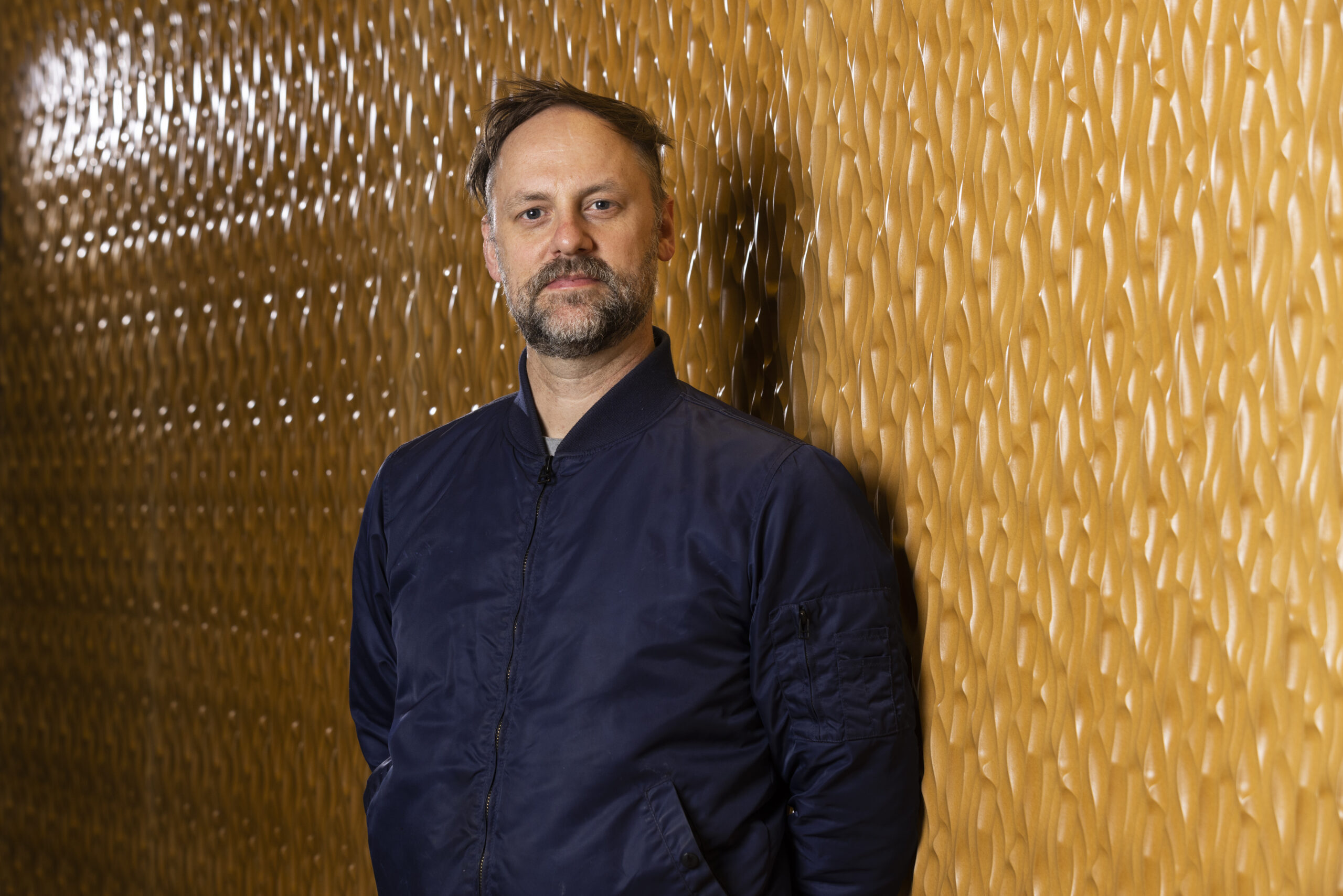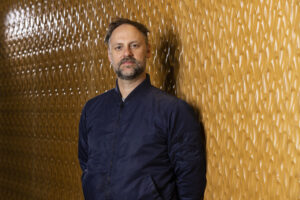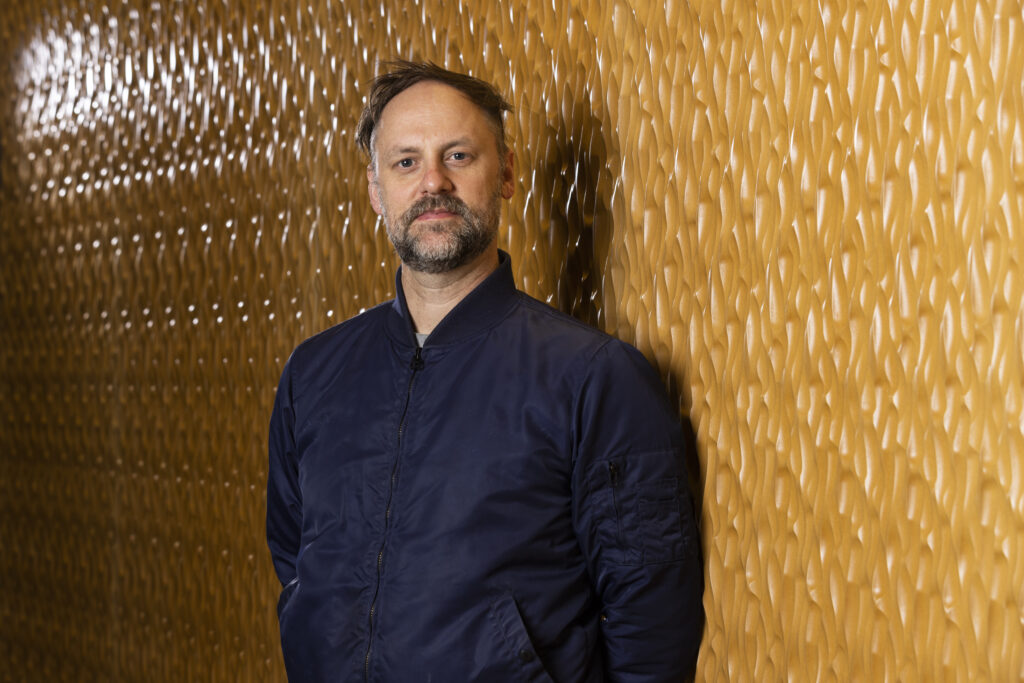Source: Special to Michigan News

Michael Andrews, lecturer with the University of Michigan Stamps School of Art and Design.

Michael Andrews, lecturer with the University of Michigan Stamps School of Art and Design.
More Info
As a lecturer at the University of Michigan Stamps School of Art and Design, Michael Andrews works with undergraduate students to develop their individual style, hone their artistic skills and engage in the world through the arts. In addition to teaching Michael often takes on other curatorial or management projects.
From 2020 to 2022 he was the Creative Director at Nora Detroit, a design centered boutique in Detroit. The store, Nora, features carefully selected modern gifts, housewares and personal items. When the Coronavirus pandemic forced schools and businesses to cancel their public programming in the spring of 2020, Andrews worried that his students would not be able to display their art. As part of the undergraduate program, the Senior Exhibition is the culmination for many students of years of hard work.
At Nora, Andrews saw an opportunity to benefit students and increase awareness for the store. He curated a unique art exhibition and sale, shepherding students from U-M, Center for Creative Studies and other schools through the process from start to finish. Stamps undergraduate Rachel Heidel was selected to craft a series of slip cast porcelain vases for sale at Nora. Andrews, in collaboration with the team, helped Nora gain the designation from Dwell Magazine as one of “America’s Best Independent Design Shops.”
Creativity, collaboration and education are at the forefront of Andrews’s career as an artist and teacher. He is currently developing a space in Detroit that hosts community space and art studios, as well as what he calls a “mixed reality clothing project” — a garment that can be worn in the physical world that is replicated in digital form, thus creating a “digital-physical hybrid world.” This June he will participate in “Mighty Real/Queer Detroit,” a city-wide retrospective and exhibition of Queer artists in Detroit.
How did you bridge your work at STAMPS and as the creative director at Nora?
A couple years ago, I felt really bad for the students who missed out on their thesis exhibition. It is the culmination of years of work and I thought with the pandemic, that was a real missed opportunity. I thought, “why don’t we make a platform for artists and designers in the metro area and give them some kind of exhibition?”
During my search I came across STAMPS student Rachel Heibel’s work and I thought it would be a great fit. The lamp she submitted for the show got a lot of buzz and it really exemplified a current vibe in sculptural homeware. After the exhibtion there was an opportunity to make a custom design so I invited Rachel to make a unique set of slipcast vases. We worked through the design process and discussed aesthetics and functionality.
What has been one of the best parts of working with undergraduate students to get their work seen in a public space?
I teach everything from foundation design to social spaces to fiber structures. I also teach seminars and courses that are more about getting your work out into the world. Everyone engages with art in different ways. Some students are end-result driven and product driven, some just want to take culture apart and respond to things without a big interest in in the commercial side of things.
What is great about U-M is that you get so many different students from different backgrounds. You get urban planners, med students, and library scientist who take our classes. It was really great for students who wanted that Art and Design context so they could show their work in relationship to other things that were either mass produced or unique, one of a kind of handmade objects. This is refreshing for me as an educator because I can start with conversations about visual art and then expand out from there into a huge range of disciplines, theories and applications. So much potential.
Another thing I like about University of Michigan is that you can think through all these different disciplines that are housed in different schools on campus. If I have a question about some kind of programming language for my own personal work, I can reach out to someone in a different department or school university and pick their brain. For where my ideas are right now, this has been a really great place to try lots of different processes and to connect with people.
How does your research shape what you bring into the classroom?
I try to bring some of these ideas into my classes and make sure that people know that there are choices available for the distribution of your work. As an artist you don’t always have to be about the end goal of selling the thing. You can be but you don’t have to. In class, we talk a little bit about entrepreneurial spirit and artistic thinking: what are the ways that people have mixed artistic and entrepreneurial spirit? What are ways to experiment with that? Who’s doing what in the world, in the metro Detroit area, but also nationally and internationally? I’ve tried to show them ways of existing as an artist in the world: first, here’s a very clear track. And here’s a circuitous track that is kind of meandering, but also an example of a sustainable life for a creative person.
Are there any particular challenges that you think that art students today are fast facing that maybe five years, 10 years ago, they weren’t?
It seems like maybe people feel like, “after I graduate, I’ll become an artist.” But I want to tell them, you can do it, NOW. You don’t have to wait for permission. I really would love students to just jump in and try things.
It’s experiential, and it’s okay to fail. I would hope that people could also start to think of other ways of seeing the world or presenting the world. It’s not always about promotion. You can make things and not share them instantly. You can hibernate for a while and build, develop the work and see what happens. It’s great to remind students that a life in art and design is a long-term game and your work evolves over time.


